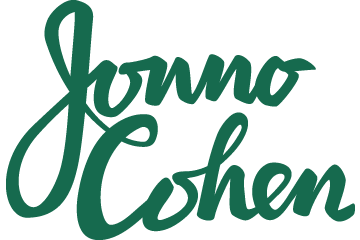Nothing.There is nothing more frightening than nothing. Try imagine nothing. You can’t. The nothingness you imagine is still a ‘-ness’; a thing. We just aren’t adequately equipped to comprehend nothing.
That’s why the most difficult step in any creative effort is often the first. Faced with a blank canvas, an open brief, a new document, my mind doesn’t know where to begin. The sheer blankness of it all is overwhelming, and without direction, I’m immobilised.
Virgin Moleskine Blank-fright
A little over two years ago, around the time I started out working on my own, I decided that if I were to be taken seriously as an Independent Creative, it behooved me make time to sketch daily. Making the time was the easy part. On Day 1 of my new mission I sat down at my favourite coffee shop, pulled out my trusty mechanical pencil and marvelled at my shiny new 9 × 14″ Moleskine sketchbook. Inside the black faux-leather elastic-bound cover were 240 pristine white pages just waiting to be filled with works of art.
240. Blank. Pages. What to fill them with? What could I draw? I began with the mohawked gentleman seated at the table to my right. The couple at the table to my left. My fist. My receipt. Competent sketches, but nothing of the sort one sees showcased on Flickr or in hard-cover design books. Inspiration was notably absent. I ended my first session there. Later efforts were no easier, and became increasingly sporadic. It took me a year to fill the first 25 pages of that sketchbook. I’m not the only one grappling with blank-fright. Web designer Rob Hawkes confesses to a similar problem on Grace Smith’s blog:
I remember the first time I got a Moleskine I didn’t draw anything on the first page for fear of ruining the notebook. After a while that fear of not being worthy of the off-white pages subsides and you start to enjoy using it as a functional piece of idea-gathering equipment.
Like Hawkes, since my first experience it’s become easier for me, more natural. Today I am halfway through my sketchbook, industriously populating its pages with notes, sketches, ideas and doodles. From time to time I indulge in a little reminiscing and flip through the Moleskine, revisiting my old scribblings, wincing a little at some. But what always stands out to me is how long it took to really get started. It was tough, and the start of every new endeavour is equally tough.
A very good place to begin
However, over time I’ve stumbled upon several tactics that help me get over the blankness and get moving a little quicker and less painfully.
Act. Now.
It’s the vast openness of a blank canvas that makes it so intimidating. Just take the first step, however clumsy. You’ll right yourself on the second and third, and by then the canvas is blank no more: you’ll have something to adjust, adapt and move forward. But dwelling on the blankness simply makes it more daunting. Joel Bradbury, also featured in Grace Smith’s aforementioned post, makes this even easier for himself by starting his sketchbooks “about a third of the way in, seems to help get over the crippling fear that the first page in a brand new book brings with it.”
Make the box
If I can just get myself moving I can speed along, but without direction I won’t get very far. The trick here is to give yourself direction by creating artificial constraints. They can be arbitrary, but they’ll fool your mind into thinking it doesn’t have to create something from nothing. A mind that has something to work with is a happy mind.
Take it easy
I have been known to over-analyse and plan ad nauseam, looking for the perfect start. It doesn’t exist. Don’t be precious about what goes onto the page. Focus on filling the page rather than doing so perfectly. You’re allowing quantity to trump quality, but the trick is that the quality needs, is born from, the quantity. Photographers are really good at this. They’ll take hundreds of shots in a shoot, all for the sake of the dozen gems that will emerge. I’ve also discovered recently that the permanence of ink allows me to doodle much more freely and confidently than with a pencil, when the possibility of erasing any misstep makes me think twice – once too many – about every stroke. The result is a fuller, better-fed sketchbook that rewards me more often.
These tips need not apply only to sketching specifically. I’ve adapted them in various forms to help me get over my too-frequent bouts of avoidance-procrastination. It’s become clear to me that the obstacles at the start of a task are usually either imagined or not yet relevant. It all really comes down to ignoring those obstacles and getting on with things. Even if the outcome is not what I had anticipated, it is invariably something. Which is better than nothing.

